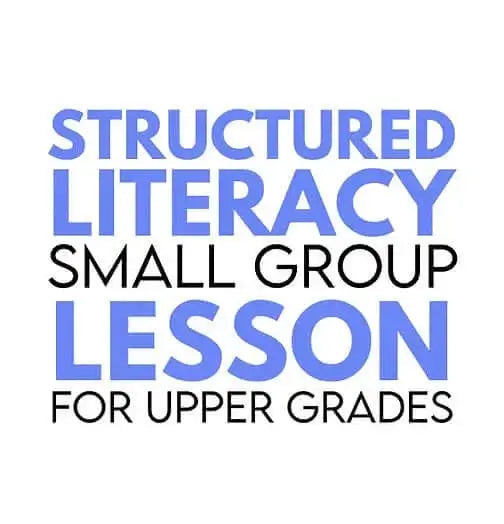
· By Jen Jones
A Deep Dive into the West Virginia Phonics Curriculum
Why the West Virginia Phonics Curriculum Matters
When it comes to ensuring reading success, the West Virginia Phonics Curriculum stands out as a robust, research-backed program designed to help young learners.
If you're looking for a quick overview of West Virginia Phonics Curriculum, here it is: - Phonemic Awareness: Building blocks of sounds in words. - CVC Words: Consonant-Vowel-Consonant patterns. - Consonant Blends and Digraphs: Two letters blending to make a single sound. - Long Vowels and Vowel Teams: Different vowel combinations. - Multisyllable Words: Breaking down complex words.
Phonics isn't just an educational buzzword—it's the cornerstone of reading success. By mastering phonics, children not only recognize words but also understand them, making reading a smoother and more enjoyable experience.
I’m Jen Jones, an educator with over 30 years of experience and a deep passion for literacy education. My journey has taken me from classrooms to international conferences, always with the goal of improving reading outcomes. With the West Virginia Phonics Curriculum, I’ve seen the transformative power of systematic, explicit phonics instruction.

Understanding the West Virginia Phonics Curriculum
Key Components of the Curriculum
The West Virginia Phonics Curriculum is designed to ensure that every child masters the fundamental skills needed for reading success. This curriculum is built on a structured scope and sequence, which means skills are taught in a specific order, from simple to complex. This systematic approach is crucial for building a strong foundation in reading.
Phonemic Awareness is the first skill in this curriculum. It involves recognizing and manipulating sounds in spoken words. This skill is essential because it helps children understand that words are made up of individual sounds, or phonemes.
Next, students learn Consonant-Vowel-Consonant (CVC) words. These are simple three-letter words like "cat" or "dog". Mastering CVC words helps children understand the basic structure of words.
Consonant Blends and Digraphs follow. Blends are combinations of two or more consonants where each sound is heard, like "bl" in "black". Digraphs are pairs of letters that create a single sound, like "sh" in "ship".
Long Vowels are introduced later. These vowels say their name, like the "a" in "cake". Understanding long vowels is important for reading more complex words.
Instructional Strategies
The curriculum emphasizes systematic instruction, where each lesson builds on the previous one. This approach ensures that children fully understand each concept before moving on to the next.
Multi-sensory lessons are a key part of this instruction. These lessons engage multiple senses to help children learn. For example, students might use letter tiles to build words, trace letters in sand, or clap out syllables. This approach makes learning more engaging and helps reinforce concepts.
Connected texts are another important strategy. These are stories or passages that include words with the phonics skills students are learning. For example, if students are working on CVC words, they might read a story that includes many CVC words. This helps them apply their new skills in context, making learning more meaningful.
The West Virginia Phonics Curriculum is a comprehensive and systematic approach to teaching reading. By focusing on key components like phonemic awareness, CVC words, blends, digraphs, and long vowels, and using effective instructional strategies like multi-sensory lessons and connected texts, this curriculum sets students up for reading success.

Resources and Support
Next, we'll explore the resources and support available to educators implementing the West Virginia Phonics Curriculum.
Implementing the West Virginia Phonics Curriculum
Resources and Support
Implementing the West Virginia Phonics Curriculum requires the right resources and support. Here’s what you need to know:
Teacher Training
Effective implementation starts with well-trained teachers. The Early Learning Technical Assistance Center (ELTAC) offers high-quality professional learning to ensure educators are prepared. They provide workshops, webinars, and coaching sessions to help teachers master the curriculum.
Classroom Integration
Integrating the curriculum into your classroom is straightforward. The West Virginia Phonics Curriculum includes detailed lesson plans that guide teachers through each step. These plans are designed for both whole-group and small-group instruction, making it easy to adapt to different classroom settings.
Assessment Tools
Assessing student progress is crucial. The curriculum comes with various assessment tools to monitor student growth. These tools help identify areas where students may need additional support, ensuring no child falls behind.
Tools 4 Teachers
Tools 4 Teachers offers a wealth of free resources, including the West Virginia Phonics materials. By signing up for a free account, teachers can access lesson plans, word cards, and other instructional materials. These resources are designed to be simple and straightforward, making them easy to use in any classroom.
Open Source Phonics
Another great resource is Open Source Phonics. This collection includes 120 lessons that cover everything from letters and sounds to suffixes. The materials are basic but effective, providing a solid foundation for phonics instruction.
Free Downloads
The West Virginia Department of Education provides numerous free downloads to support the phonics curriculum. These include skill sets for CVC words, consonant digraphs, blends, long vowels, and more. These resources are comprehensive and can be used to supplement existing curricula.
Classroom Application
Lesson Planning
Planning is key to successful implementation. The curriculum provides structured lesson plans that include warm-ups, sound-symbol connections, phonemic awareness activities, word reading, and writing exercises. These plans ensure that each lesson is thorough and engaging.
Daily Routines
Incorporate phonics into your daily routines to reinforce learning. Start each day with a quick phonemic awareness activity or a word-building exercise. Consistency helps students retain and apply what they’ve learned.
Student Engagement
Keeping students engaged is essential. Use multi-sensory lessons that involve seeing, hearing, and touching to make learning interactive. Activities like sound-symbol mapping and connected text reading make lessons fun and memorable.
By leveraging these resources and strategies, teachers can effectively implement the West Virginia Phonics Curriculum and set their students on the path to reading success.
Next, we’ll delve into the benefits of the West Virginia Phonics Curriculum, including its impact on literacy rates and student outcomes.
Benefits of the West Virginia Phonics Curriculum
Research and Evidence
The West Virginia Phonics Curriculum is backed by extensive research and evidence, making it a powerful tool for improving literacy.
Literacy Rates
Studies have shown that systematic phonics instruction significantly boosts literacy rates. For instance, the University of Florida Literacy Institute offers a complete curriculum that has helped numerous students achieve reading proficiency. This aligns with the findings from the National Reading Panel Report (2000) and the National Early Literacy Panel Report (2008), which emphasize the importance of phonics in early reading development.
Student Outcomes
The ten skills outlined in the West Virginia Phonics Curriculum—ranging from phonemic awareness to multisyllable words—are designed to leave no gaps in a child's phonics mastery. This comprehensive approach ensures that students develop strong reading foundations. Teachers using this curriculum report noticeable improvements in reading fluency and comprehension among their students.
Teacher Feedback
Teachers have praised the curriculum for its structured and easy-to-follow format. One educator noted, "The West Virginia Phonics program has transformed the way my students learn to read. The systematic approach and engaging activities keep them motivated and on track." Such positive feedback underscores the curriculum's effectiveness in real classroom settings.
Science of Reading
The curriculum is grounded in the Science of Reading, a body of research that explains how children learn to read. This scientific approach ensures that the instructional methods used are evidence-based and effective. The focus on explicit phonics instruction helps students decode words more efficiently, leading to better reading outcomes.
Effectiveness Studies
Effectiveness studies have consistently shown that students who receive systematic phonics instruction outperform their peers who do not. For example, the Hello Phonics routine, which is aligned with the West Virginia Phonics Curriculum, has been proven to improve phonemic awareness, phonics, fluency, vocabulary, and comprehension. These findings are supported by both the National Reading Panel and the National Early Literacy Panel.
Educational Impact
The educational impact of the West Virginia Phonics Curriculum is significant. By providing high-quality, standards-aligned instruction, it prepares students not just for academic success but also for life beyond school. The Early Learning Technical Assistance Center (ELTAC) supports this initiative, aiming to elevate educational practices across West Virginia. Their mission is clear: to ensure every child can read proficiently by the end of grade five.
In summary, the West Virginia Phonics Curriculum is a well-researched, evidence-based program that significantly improves literacy rates and student outcomes. Teachers and educators can rely on its systematic approach to deliver effective reading instruction, setting students on a path to long-term success.
Next, we’ll address some frequently asked questions about the West Virginia Phonics Curriculum, including what it entails and how it can be effectively implemented in the classroom.
Frequently Asked Questions about West Virginia Phonics Curriculum
What is the West Virginia Phonics Program?
The West Virginia Phonics Program is a free, comprehensive curriculum designed to help teachers provide effective reading instruction. It focuses on ten essential phonics skills:
- Phonemic Awareness
- Consonant-Vowel-Consonant (CVC)
- Consonant Blends
- Consonant Digraphs
- Long Vowels
- Predictable Vowel Teams
- Vowel Teams with Multiple Sounds
- Vowel r
- Complex Consonants
- Multisyllable Words
These skills are taught systematically, from simple to complex, ensuring no gaps in phonics mastery. The program also offers free resources like decodable stories and lesson plans through Tools 4 Teachers.
What is the Floss Rule in West Virginia Phonics?
The Floss Rule is a spelling rule that helps students remember when to double consonants. According to this rule, if a one-syllable word ends in "f," "l," or "s" after a short vowel, the final consonant is doubled.
For example: - Staff (not "staf") - Bell (not "bel") - Miss (not "mis")
This rule acts as a memory aid to improve spelling accuracy and consistency in young readers.
What Grade Should Phonics Be Taught?
Phonics instruction should ideally begin in Kindergarten or First Grade. Early, systematic phonics instruction lays the foundation for reading success.
Research shows that teaching phonics at an early age helps children develop strong decoding and word recognition skills, which are crucial for fluent reading. The West Virginia Phonics Curriculum provides structured, explicit instruction that aligns with the science of reading, ensuring every child gets a solid start.
Next, we’ll wrap up with a conclusion on the long-term benefits of the West Virginia Phonics Curriculum and how Hello Decodables can further enhance phonics success.
Conclusion
The long-term benefits of the West Virginia Phonics Curriculum are profound. By providing structured, explicit instruction, this curriculum sets the stage for lifelong reading success. Research underscores that early phonics education significantly boosts decoding and word recognition skills, which are essential for fluent reading and overall academic achievement.
Hello Decodables complements the West Virginia Phonics Curriculum perfectly. Our decodable books are designed to align with phonics instruction, offering students ample opportunities to practice and master new skills in a fun and engaging way. Each book targets specific phonics skills, building on previous lessons to ensure a smooth progression from simple to complex concepts.
By integrating Hello Decodables into your phonics instruction, you can enhance student engagement and retention. Our books are not just educational tools; they are gateways to a world of reading enjoyment and literacy success.
Ready to boost your phonics instruction? Explore Hello Decodables and see how our resources can make a difference in your classroom.
Together, we can ensure every child has the opportunity to become a confident, proficient reader.
